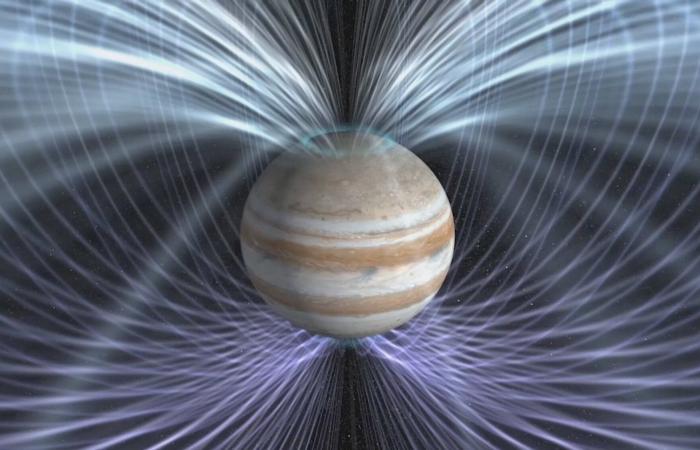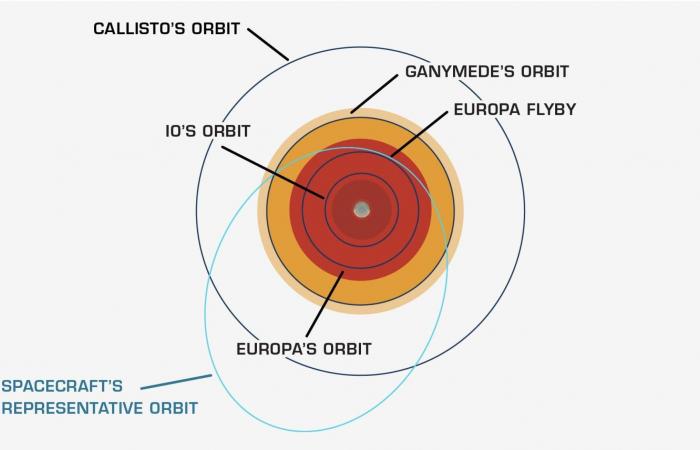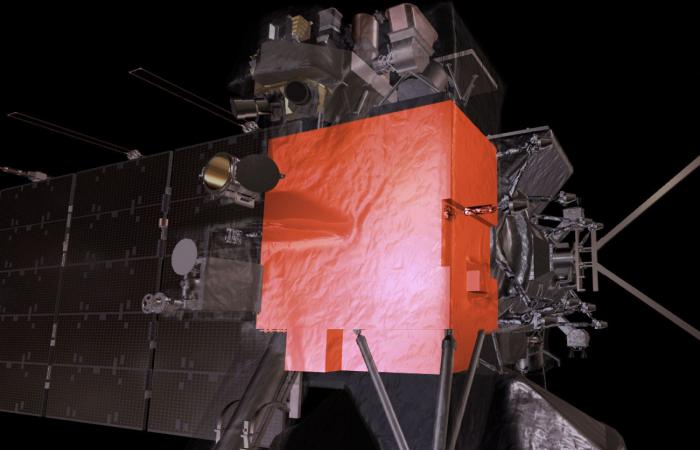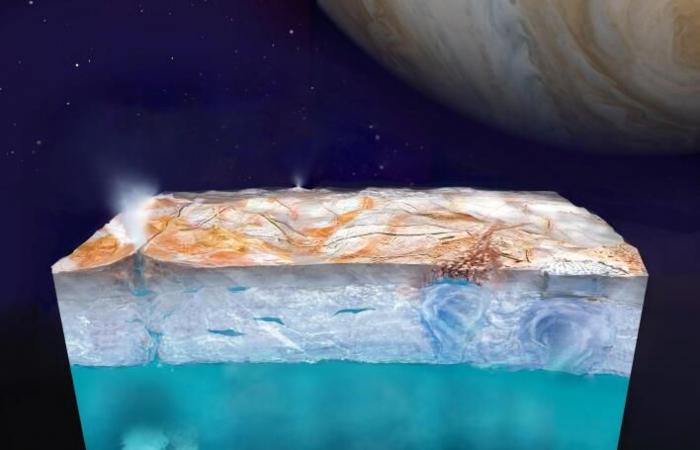The brains of NASA’s Europa Clipper spacecraft are stored in a metal vault.
This is where the large exploration vehicle – the length of a basketball court – protects its computers, software and many electronic devices. The craft is about to launch towards Europa, Jupiter’s moon, which planetary scientists suspect of harboring an ocean. twice the quantity of that of the Earth. With around 50 close calls from Europe, NASA will be able to confidently answer the question of whether this oceanic kingdom also harbors the ingredients, such as an energy supply and revealing materials, necessary for the life.
However, the radiological environment there is particularly hostile.
“The charged particle environment on the Europa site is huge,” Cynthia Phillips, NASA planetary geologist and project scientist for the space agency’s Europa Clipper mission, told Mashable.
A NASA scientist viewed the first images of Voyager. What he saw gave him chills.
Jupiter, a gas giant planet 317 times larger than Earth, generates a massive magnetic field extending between 600,000 and 2 million miles (1 to 3 million kilometers) away from the sun. It is created by the planet’s liquid metal core, which rotates and creates electrical currents (moving electrical currents create magnetic fields). Importantly, this magnetic field captures and then accelerates particles from the incessant solar wind – a stream of fast-moving charged particles emitted by the sun – which creates powerful radiation belts around Jupiter.
“It bombs everything. »
Any craft traveling around the planet will almost certainly pass through these dangerous zones and expose devices to harmful particles, which can damage computer chips and electronic devices. “It bombs everything,” Europa Clipper program scientist Curt Niebur said at a news conference ahead of the mission’s launch. Several decades ago, during the Voyager mission, NASA engineers were concerned about the spacecraft passing near Jupiter. A person hypothetically traveling aboard Voyager as it passed Jupiter would have been hit by a dose of radiation 1000 times the mortal level.
A representation of Jupiter’s sprawling magnetic field. If seen with the naked eye, “it would appear two to three times larger than the sun or moon to viewers on Earth,” NASA explained.
Credit: NASA Goddard Space Flight Center
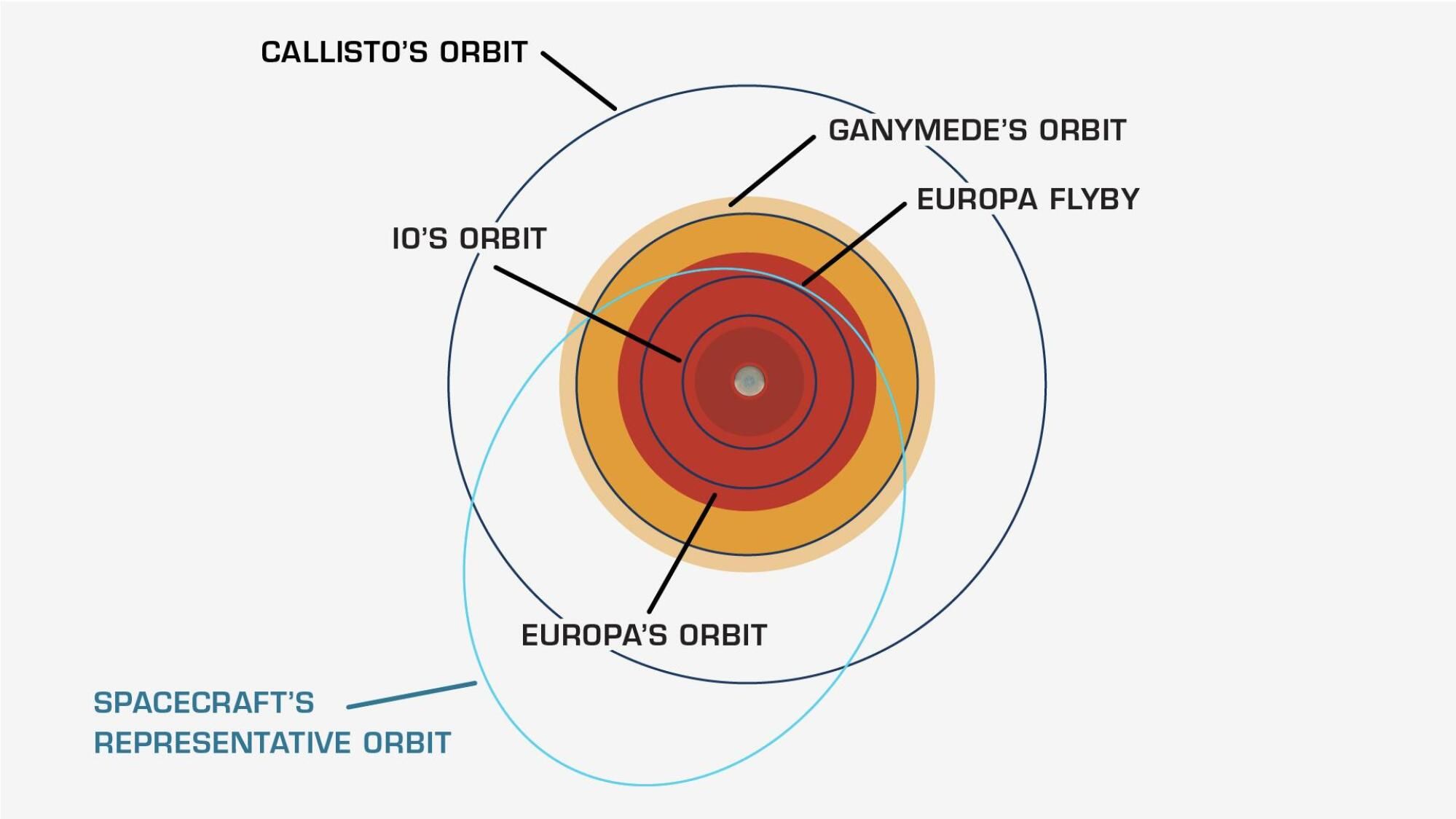
“The relative intensity of Jupiter’s radiation bands is shown in this diagram,” NASA explains, with darker reds representing more radiation. The orbits of Europa and Europa Clipper are shown in the graph.
Credit: NASA
Hence the safe. “The vault significantly reduces the harmful radiation these electronic devices receive,” Phillips said. (NASA’s Juno spacecraft, which explores the greater Jupiter system, also carries a safe.)
Crushable speed of light
Yet there are electronic devices outside of this protective metal casing. And in May NASA received test data that suggested that some transistors – which are electrical switches controlling how electricity flows around the spacecraft – could not withstand the high radiation environments around Europa. Fortunately, intensive follow-up tests showed that these switches would work when the craft made about 50 flybys over three and a half years. “They have unequivocally adopted this review today,” said Nicola Fox, who leads NASA’s science mission race, following the crucial September decision to greenlight the mission.
But mission engineers will monitor these transistors closely. Like the New York Instances Reported, NASA locked in a late addition to the craft, a small “canary box” containing the different types of transistors. If any of them show signs of damage or malfunction as Europa Clipper passes through the radiation belts, planners could adapt the mission.
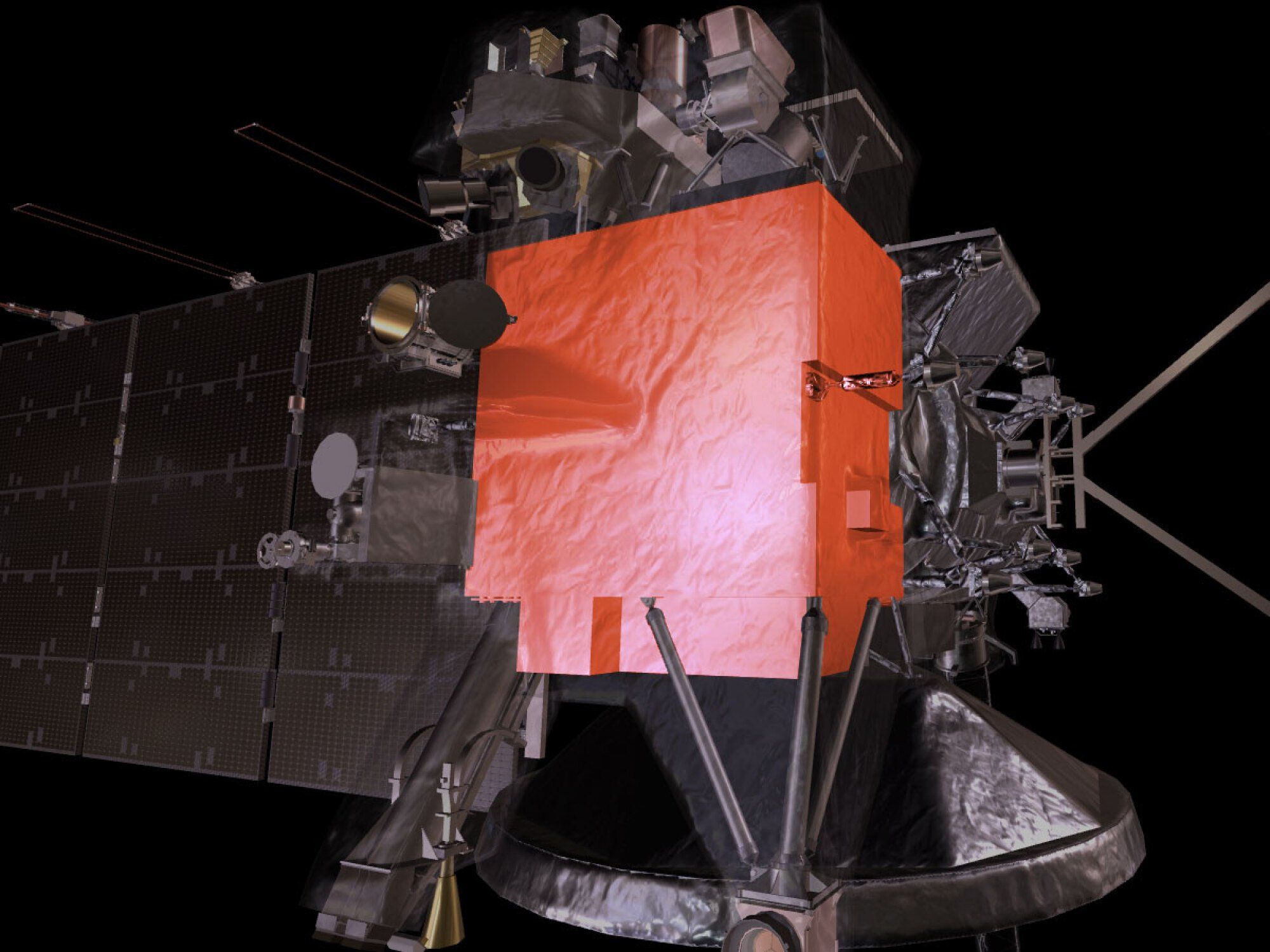
In this graphic, the box lit in red shows the vault of the Europa Clipper in the center of the spacecraft.
Credit: NASA
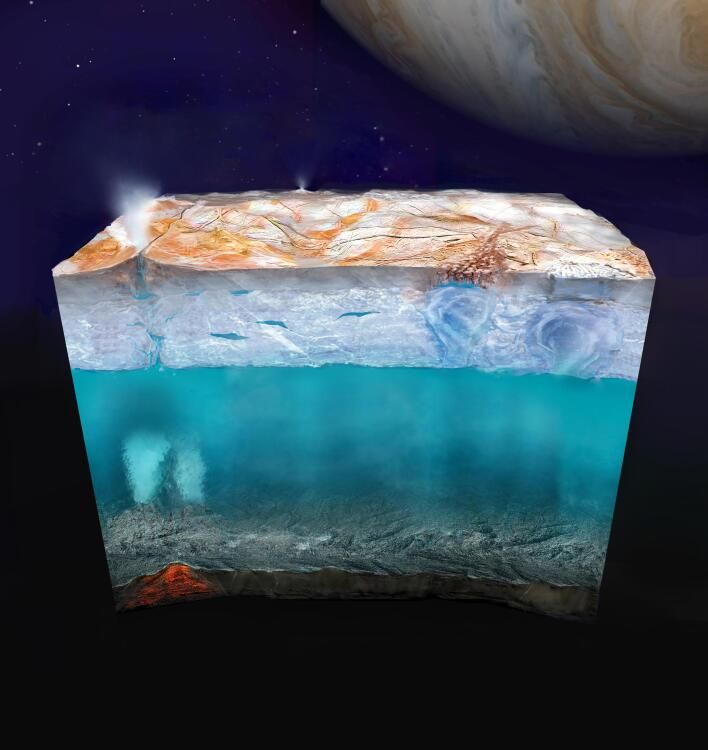
An artistic conception of the ocean and geothermal energy sources that may exist beneath Europa’s thick ice crust.
Credit: NASA
Already, the mission’s orbital plan – which involves moving away from damaging regions after making close flybys of the ice-covered moon – minimizes the time the craft is exposed to areas of high radiation. During each orbit around Jupiter, the craft will spend less than a day in an irradiated zone before taking off. He won’t come back for two to three weeks.
“Get out of there,” Phillips told Mashable.
“Get out of there. »
Exposing the robotic spacecraft to radiation comes with rewards, however. When the probe dives near Europa between 2031 and 2034, it will have the opportunity to see, scan and study Europa in unprecedented detail. Ground-penetrating radar will look beneath the ice and potentially see areas of liquid water or even where the ice meets the alien ocean. An instrument called the SURface Mud Analyzer, or SUDA, will literally sample particles of Europa ejected into space by tiny meteorites. And of course, Europa Clipper will capture a multitude of images.
“The pictures are going to be spectacular,” says Laurie Leshin, director of NASA’s Jet Propulsion Laboratory, the agency’s center that built the craft.
In summary, thanks to this laboratory of orbiting devices, NASA will be able to determine whether the Moon’s ocean has the right elements – energy sources, a secure and long-lived ocean, organic compounds ( like carbon) – for life. If so, the agency plans to return to Europe and land on the icy crust. This time, they won’t just be looking to see if it’s liveable. They will pierce the ice to see if it is reside.
“We’re going to knock on the door for a second mission,” Niebur said.


